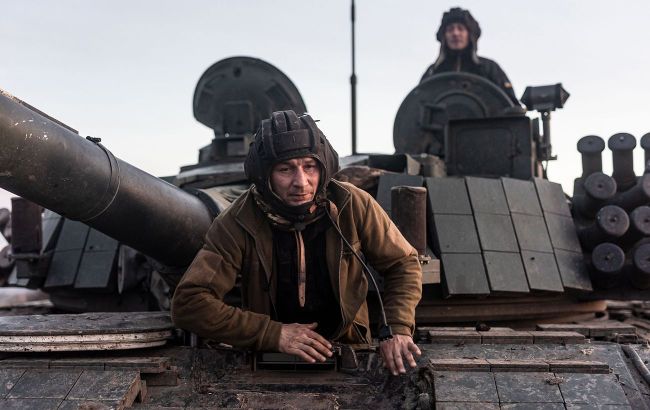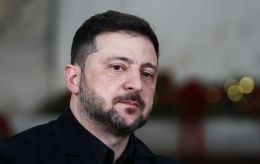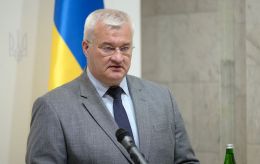Operation in Kursk region: ISW names scenarios for Russia's response
 Illustrative photo (Getty Images)
Illustrative photo (Getty Images)
The Russian army is expected to attempt several scenarios to reclaim the settlements in the Kursk region that Ukrainian forces have taken control of in recent days, according to the Institute for the Study of War (ISW).
The Ukrainian cross-border mechanized offensive operation in the Kursk region, which began on August 6, continues as part of Ukraine's operational efforts on Russian territory. The Institute for the Study of War declined to assess the intentions of this Ukrainian operation to avoid compromising Ukraine's operational security.
Meanwhile, ISW reported that geolocated footage and statements by Russian officials indicate that on August 8, Ukrainian forces continued their rapid advance deeper into the Kursk region. Reports suggest that Ukrainian forces are already operating 35 kilometers from the international border with the Sumy region.
However, maximalist claims and unverified reports about Ukrainian advances within Russia do not represent territory that ISW assesses that Ukrainian forces have seized or control, the report says.
Moscow will try to regain control
ISW analysts are convinced that the Kremlin will almost certainly attempt to regain control of the territory in the region that Ukrainian forces have seized and halt the Ukrainian advance deeper into Russia. The Institute believes that significant progress by Ukrainian forces would be a strategic blow to the long-standing efforts of Russian dictator Vladimir Putin aimed at cementing the legacy of Russian stability, security, and geopolitical resurgence.
Given the situation and Russian media reports, the Russian military command has several potential courses of action in response to the Ukrainian operation in the Kursk region. ISW is currently not ready to assess which of these scenarios is the most likely and does not rule out that the Russian command may employ more than one option.
The decision-making of the Russian military command will be influenced by its perception of the size and capabilities of Ukrainian forces in the area, about which the Institute for the Study of War has provided no assessments.
Russia's likely courses of action (COA)
COA 1: The Russian military command may decide to use existing conscripts, Federal Security Service (FSB) border guards, Rosgvardia, and other irregular forces already deployed to the international border area to push Ukrainian forces back and defend against the Ukrainian operation in Kursk region.
COA 2: The Russian military command may decide to use the existing Northern Grouping of Forces deployed along the Russian-Ukrainian border to respond to the Ukrainian operation in the Kursk region.
COA 3: The Russian military command may choose to redeploy operational reserves that it accumulated for its planned Summer 2024 offensive effort and/or relatively better provisioned and more combat effective frontline units to the Kursk region from elsewhere in the theater.
COA 4: The Russian military command may seek to maintain the forces it currently has committed to the Kursk region but could redeploy significant aviation and strike elements to the area in an effort to improve Russia's ability to retake territory.
The report also says that the lack of a coordinated Russian response to the Ukrainian invasion of the Kursk region and the speed of the Ukrainian advance suggests that Ukrainian forces were able to achieve operational surprise along the border with Russia.
Key takeaways
- Ukrainian cross-border mechanized offensive operations into the Kursk region that began on August 6 are continuing as part of a Ukrainian operational effort within Russian territory.
- Geolocated footage and Russian claims indicate that Ukrainian forces continued rapid advances further into the Kursk region on August 8, and Ukrainian forces are reportedly present in areas as far as 35 kilometers from the international border with the Sumy region. However, Ukrainian forces most certainly do not control all of the territory within the maximalist extent of Russian claims about Ukrainian advances in the Kursk region
- The lack of a coherent Russian response to the Ukrainian incursion into the Kursk region and the reported rate of Ukrainian advance indicates that Ukrainian forces were able to achieve operational surprise along the border with Russia.
- Ukrainian officials have yet to comment directly on Ukraine's ongoing operation into the Kursk region.
- US officials noted that Ukraine's ongoing operation into the Kursk region is not a violation of US restrictions on Ukraine's ability to strike military targets within Russia's border areas.
Operation in Kursk region
Earlier this week, according to media reports, the Ukrainian Armed Forces crossed the state border with Russia and began advancing and taking control of border areas in the Kursk region.
Within the first day alone, Ukrainian forces captured approximately 30 kilometers of Russian territory.
In particular, the Ukrainian army took control of a gas metering station near the town of Sudzha.
Within three days of the operation, the Russians lost 350 square kilometers of territory in the Kursk region.
The operation does not violate US restrictions on Ukraine's ability to strike military targets in border areas with Russia.
The Pentagon does not consider the capture of settlements in the Kursk region an escalation.
More details on the situation in the Russian region can be found in the RBC-Ukraine report.

